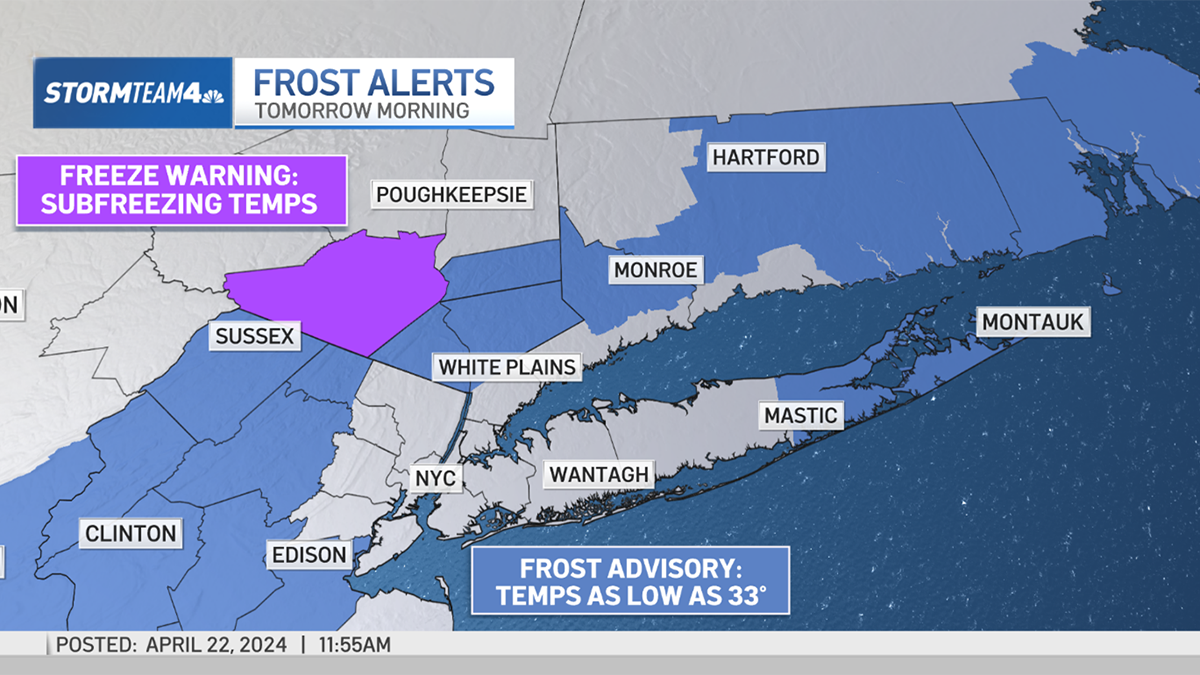You know the temperature, and you know when it's cold and when it's hot. But in the winter, you also hear about wind chills and "feels like" all the time, and they usually mean bad things are coming.
But what are they, really, and why do we use both?
The “Feels Like” temperature, or wind chill in the winter time, is calculated using a very specific formula that models the convective heat transfer properties of the human body during cold, windy conditions.
The wind chill has a very narrow focus – it relates only to exposed skin in direct contact with breezy, cold air. It does not apply to skin that is insulated from the wind.
Get Tri-state area news and weather forecasts to your inbox. Sign up for NBC New York newsletters.
For example: If you go outside on a bitterly cold and windy day but are covered head to toe and have no skin exposed to the outside air, the wind chill does not apply. The wind chill also does not apply to inanimate objects or cold-blooded animals that are the same temperature as the air around them.
It only applies to warm-blooded creatures that lose heat based on the temperature difference between their skin surface and air in direct contact with it.
Weather Stories
Wind chill vs "feels like" vs air temperature
Regarding the question, “What’s the point of the actual temperature if that’s not what it ‘feels like’?” -- the simple answer is that the ACTUAL temperature is EXTREMELY important!
It applies to everything else besides wind impacts on exposed skin. Actual temperature determines whether water freezes or stays liquid. It determines whether we get snow or rain. Wind chill has no impact on any of these things.
Here’s an example: Some people may think that air at 40 degrees but with a wind chill of 25 (thanks to a strong breeze) might freeze water.
Not true.
The water will come to equilibrium with the air and settle at a temperature of 40 degrees, the ACTUAL temperature of the air. Being an inanimate, non-living thing, water is not impacted by wind chill.
Wind chill formula
But, do people all feel temperature in the same way? That gets more into the philosophical realm. Objectively, because we’re warm-blooded creatures we all feel varying degrees of cold with or without wind thrown into the mix. Some people may be more tolerant of the cold than others, but we all feel it.
(A historical footnote: The wind chill was “invented” by researchers Paul Siple and Charles Passel in Antarctica in 1945. It was later adopted by the National Weather Service to help communicate the impact of cold wind on exposed skin. The calculation has been tweaked since being introduced.
And if you really, REALLY want to show off, here's the wind chill formula, according to the University of Kentucky:
T(wc) = 0.0817(3.71V**0.5 + 5.81 -0.25V)(T - 91.4) + 91.4 T(wc) is the wind chill, V is in the wind speed in statute miles per hour and T is the temperature in degrees Fahrenheit.



